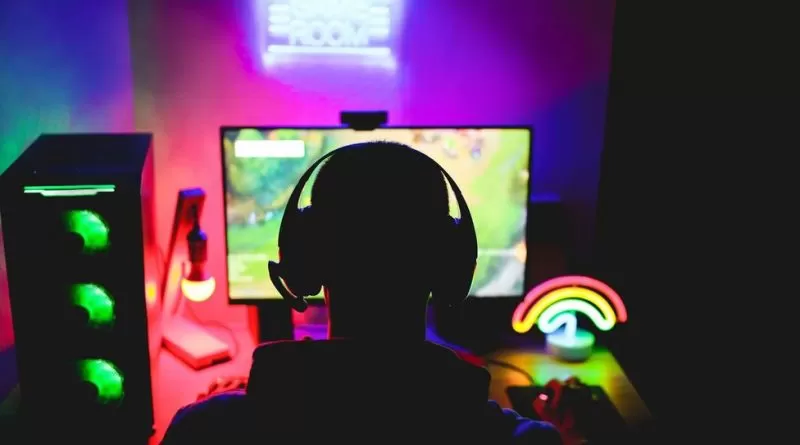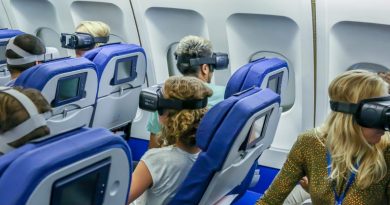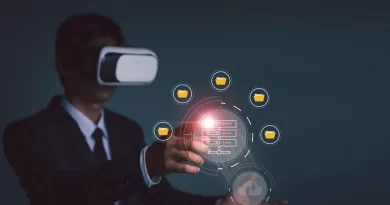Gaming and Community: How Virtual Worlds Build Real Connection
Because of the massive surge witnessed during the nationwide lockdowns, gaming has made its way into the mainstream sports category. It is now the primary source of entertainment on a global scale. What was once considered a subset of sports has now evolved into a full-fledged industry in its own right.
The online gaming industry has been on an upward trajectory since the first animated pixel appeared on our screens, with developers on a mission to create a truly immersive world. With technological advancements, we are getting closer to a world where blocky scenes can be transformed into photo-like depictions that are nearly lifelike. Prior to the global pandemic, digital games were already becoming popular pastimes; however, the global crisis accelerated the process by disrupting physical forms of entertainment.
Gaming is doing far more than simply supplanting other forms of entertainment. It is developing a next-generation digital three-dimensional environment in which people can freely interact with one another, create good and captivating content, and pass on knowledge to others in unique and innovative ways. These platforms, created by an ingenious class of coders solely for the purpose of gaming, are dramatically shaping and reshaping the future of the virtual world.
Open Metaverse Gaming
The interoperability of blockchains allows virtual gaming worlds to communicate with one another. Gaming experiences and monetization opportunities can then be teleported across any gaming platform, providing players with greater freedom and value for their gaming investments. Central authorities, such as game developers, no longer define what you can (or cannot) do in the game or how you can use the content you purchase in the open metaverse. As a player, you have complete digital ownership of all the content you achieve or create.
In The Sandbox, for example, users own all of the content, tokens, and currencies through their wallets and accounts, with everything verified and transparent on the blockchain. Everything you make is now yours. The content you create has worth. You can more easily track and benefit from the appreciation, scarcity, or rarity of your digital assets by tokenizing them.
What Are the Components of Creating A Mobile Gaming Metaverse?
Nowadays, we can’t talk about games without mentioning the metaverse. In games, a metaverse is simply an interconnected virtual world universe. Experts see the metaverse as the natural evolution of the internet and digital space. The metaverse is the near future, and there are some concerning signs of growth in the gaming industry. Let’s take a look at the factors that will help metaverse become a reality in the gaming world soon.
Immersion
Virtual reality’s future is tied to console, PC, or standalone headsets like Quest. With Oculus, we can see advances in VR technology that translate physical movements into VR, expanding its range beyond PC-reliant headsets with external tracking. The Immersion of the metaverse prioritizes mass-market devices with internal tracking.
Infrastructure and Content Delivery
The mobile world is heavily reliant on content delivery via Apple and Google. People must first download an app before being able to make a payment. However, the world of game streaming is rapidly evolving. Microsoft has released Xbox cloud gaming for mobile devices. It brings us one step closer to the metaverse’s vision of seamless streaming on mobile devices.
Open Standards
If the metaverse is to be considered the true successor to the internet, it must be built on open standards that link all virtual experiences. This means that no single entity can own the metaverse, as doing so can be extremely difficult. This open standard contradicts Apple’s and Google’s current business models, which operate as walled gardens with strict control over billing and what can be published.
Increased Adoption of Social Features
Social features in mobile games have recently exploded. Guild mechanics and co-op gameplay are becoming popular in modern mobile games. The increased adoption of social features will pave the way for the metaverse to become a more effective reality.
A Decentralized Economy
For a metaverse to thrive, a decentralized economy will be required, as centralized economies such as Google and Apple want to retain control of the entire ecosystem and payment structure. Blockchain, cryptography, and decentralized finance outline a vision for technological solutions that could enable the metaverse to have a global and functional economy.
Making Money From Your Virtual Gaming Experience
Until now, free-to-play games’ in-app purchases or virtual currency could not be withdrawn, re-used, resold, or used in other ways across games or platforms. They were perishable foodstuffs. Gamers can monetize this value in open metaverses. All gaming content is created by users. Not only do you own your gaming assets and the experiences you create, but you also have a stake in the gaming platform. As a holder of $SAND and LAND tokens, you are an owner in The Sandbox. You can earn more money as the platform earns more money.
When you purchase land in a virtual world, you are purchasing a piece of the metaverse (LAND). Players can teleport to your game, explore the map, and play user-created experiences by using the coordinates on the map. Tokenized land, games, and gaming assets have real-world value, just like real-world property. This increases your investment, making you less likely to abandon them and move to another land or metaverse. You are inextricably linked to this virtual world. You can also move into the next world via portals and teleport to neighboring lands using your avatar. Other creators and players are also incentivized to conduct economic activity in the virtual world by the value they create.
The value of land is affected by its location. Players are more likely to find your game if it is near Atari or one of the main Korean partners — Playdapp, SBS Game Academy, Sandbox Network, to name a few. As in the residential, commercial, or industrial real estate industries, digital location mimics the benefits of physical location.
Tracking the Ownership of Digital Gaming Assets
In a fully transparent public digital ledger, all transactions on the blockchain digital ledger are trackable. The ability to demonstrate ownership of virtual goods and services fosters the development of a real-world economy based on digital game assets. A virtual industrial revolution is taking place. Based on all of the game assets created by users and earned by players, a new virtual economic layer emerges. Similar virtual transformations will occur in other industries in the near future, and many are already taking place.
The value of virtual goods with a trackable ownership record increases. If an item is rare and there are only 10 copies of a magic sword, you used to have to trust the game developer that there were indeed only 10 copies. On the digital ledger, you can demonstrate the true worth and scarcity of digital assets. You can also transfer those assets to other players.
Scarcity is also an important aspect of The Sandbox. This virtual world is made up of 166,464 lands in total, and no more will be created — the blockchain contract prohibits any further LAND creation. That is one of the many benefits of using blockchain technology.
Constructing a Virtual Gaming Economy
A new world of opportunity emerges from this new economic layer in virtual world games. Previously, you could stream your content, play, collect resources, and trade them for fun or competition, but you couldn’t usually earn money. You couldn’t sell the goods, digital assets, or game items you earned or created in the game, and if you could, you were limited by the platform’s restrictions.
You have property rights in The Sandbox’s virtual world. The blockchain’s digital record of transactions in non-fungible tokens and tokens opens up new possibilities. Each game asset is assigned a unique digital identifier by NFTs. Economic supply and demand are created by creators and players. They can then optimize game features and game assets to meet the preferences of the players. Scarce, in-demand assets will be valued higher.
Players will take part in a new economic model known as “Play to Earn.” In this virtual economy, you will soon be able to start businesses and find work. A circular economy is emerging in which resources collected by one group of players are sold and purchased by another group of players or creators. Under the terms of play to earn, play can become work and a byproduct of services purchased and sold by other players. You can be an architect in the virtual economy and design the visual environment of the game. You can design clothes, farmers can collect one type of resource to sell in a store, you can be a trainer, and so on. Gamers today not only have proven digital ownership of their content, but they are also stakeholders in the metaverse where their creations reside for the first time. It’s almost as if you can go back in time to your childhood TV and ride in the Batmobile with Batman.




